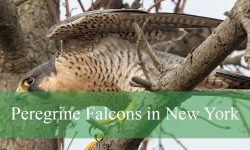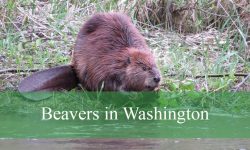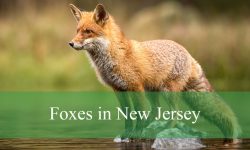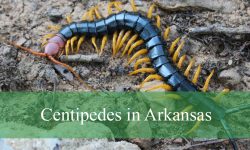Flowing through the misty forests, rugged coastlines, and volcanic highlands of Oregon are rivers teeming with life—and one of their most playful, intelligent residents is the otter. Sleek, curious, and endlessly active, otters are a symbol of Oregon’s thriving aquatic ecosystems. Whether you’ve spotted one gliding through the Willamette River or cracking open shellfish along the Rogue, these charismatic animals are a delight to witness in the wild.
But beneath their adorable appearances lies a fascinating story of survival, intelligence, and ecological importance. Oregon’s otters are not just cute—they are key indicators of water quality, biodiversity, and environmental balance. Their presence reflects the health of the rivers they inhabit.
In this detailed guide, we’ll uncover what you didn’t know about otters in Oregon rivers—their species, habits, adaptations, and vital role in keeping the state’s waterways alive. You’ll learn surprising facts about their intelligence, social behavior, and the conservation challenges they face in today’s changing landscape.
The Otters of Oregon: Species Overview
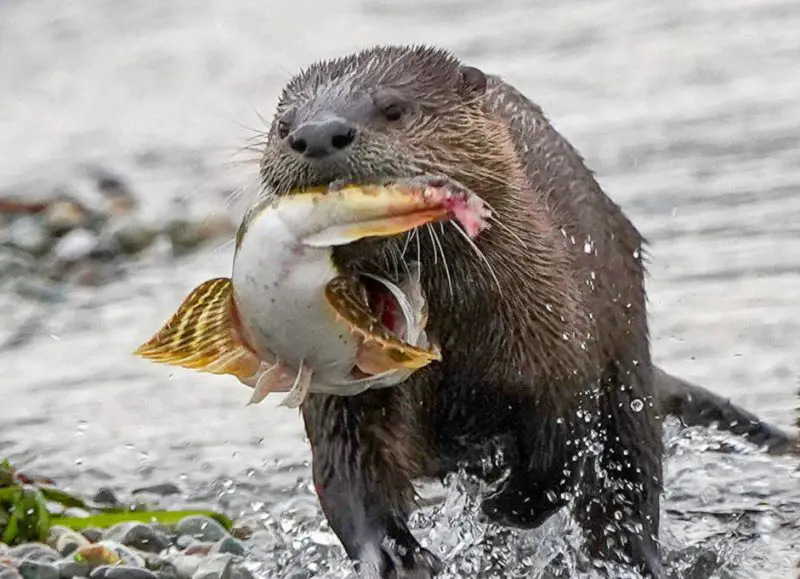
Two Species in the State
Oregon is home to two distinct species of otters, both uniquely adapted to life in the Pacific Northwest:
- North American River Otter (Lontra canadensis) – Found throughout Oregon’s rivers, lakes, and wetlands.
- Sea Otter (Enhydra lutris) – Once common along Oregon’s coast but now rare, with small populations slowly returning from reintroduction efforts.
This article focuses on the river otter, the sleek freshwater mammal that inhabits nearly every watershed in Oregon.
Physical Characteristics
The North American river otter is built for aquatic life. It has a long, streamlined body covered in dense waterproof fur—up to 850,000 hairs per square inch—that keeps it warm even in icy rivers. Adults weigh between 11 and 30 pounds and can reach up to 4 feet long, including their muscular tail, which acts as both a rudder and propeller in the water.
Their webbed feet, small rounded ears, and long whiskers make them efficient hunters, detecting movement and vibrations in murky water. River otters can close their nostrils and ears underwater and hold their breath for up to 8 minutes—a crucial advantage for ambushing prey.
Where Otters Live in Oregon
Range and Habitat
River otters inhabit nearly every major river system in Oregon, including:
- Willamette and Columbia Rivers
- Rogue and Umpqua Rivers
- Deschutes and John Day Rivers
- Klamath Basin and Crater Lake areas
They thrive in clean, unpolluted water systems with abundant fish and vegetation. Otters are semi-aquatic, meaning they split their time between land and water. They make dens—called holts—in riverbanks, hollow logs, or abandoned beaver lodges.
The Coastal Connection
Along the Oregon coast, river otters often overlap with sea otters in estuaries and tidal zones. Unlike sea otters, which spend their entire lives at sea, river otters move freely between saltwater and freshwater environments, taking advantage of Oregon’s rich coastal ecosystems.
Behavior and Lifestyle
Playful Yet Strategic
Otters are famous for their playful antics—sliding down mud banks, chasing each other in the water, or juggling pebbles. But these activities serve more than entertainment; they help strengthen muscles, sharpen coordination, and reinforce social bonds within families.
They’re also incredibly intelligent. Studies show that otters use tools, such as rocks, to crack open shellfish or clams. Their problem-solving abilities rival those of dolphins and primates, making them one of North America’s most intelligent carnivores.
Diet and Hunting
River otters are opportunistic carnivores, feeding on:
- Fish (trout, salmon, and minnows)
- Crayfish and frogs
- Amphibians, insects, and small mammals
- Occasionally waterfowl and bird eggs
They are agile underwater predators, using speed and surprise to catch prey. Their playful appearance hides a ruthless efficiency when hunting—an adult otter can consume up to 20% of its body weight in food daily.
Social Structure
Otters are mostly solitary or live in small family groups. Females raise their young alone, while males form loose bachelor groups outside of breeding season. Communication includes chirps, whistles, and growls, as well as scent marking along riverbanks using musk glands near the tail.
Breeding and Life Cycle
Mating and Birth
Otters breed in late winter or early spring, but fertilization is delayed—an adaptation called embryonic diapause. This means the fertilized egg doesn’t implant immediately, allowing the female to time births for optimal conditions.
After a total gestation of 9–12 months, the female gives birth to 1–6 pups in a hidden den near water. The pups are born blind and helpless, opening their eyes after a month and learning to swim by 2 months old.
Growing Up
Otter mothers are exceptionally attentive, teaching their young to hunt, swim, and avoid predators. By autumn, the pups become skilled hunters and venture out independently. Most reach sexual maturity by age 2 and live an average of 8–10 years in the wild (though they can live over 20 years in captivity).
The Role of Otters in Oregon’s Ecosystems
A Keystone Predator
River otters play a crucial role as keystone species, helping regulate fish and invertebrate populations. By preying on weaker or diseased animals, they maintain ecological balance in freshwater systems.
Their presence also reflects water quality—healthy otter populations indicate clean, thriving ecosystems. When pollution or habitat loss reduces water quality, otters are among the first to disappear.
Seed Dispersal and Ecosystem Engineers
While primarily carnivores, otters sometimes consume fruits and aquatic vegetation, spreading seeds through their droppings. Their movement between rivers and wetlands also helps distribute nutrients and create microhabitats for smaller creatures.
Threats to Otters in Oregon
Habitat Loss
Urbanization, dam construction, and agricultural runoff threaten otter habitats. Development along riverbanks reduces available den sites, while dams block fish migration routes, cutting off otter food sources.
Pollution and Water Contamination
Otters are sensitive to pollutants like heavy metals and pesticides that accumulate in fish. Exposure can lead to health problems or population decline. Efforts to clean up Oregon’s rivers—such as those led by the Oregon Department of Environmental Quality (DEQ)—are crucial to otter survival.
Human Interaction
Though not aggressive, otters occasionally clash with humans. Fishermen sometimes view them as competition, while boaters may accidentally disturb dens. Illegal trapping or hunting, though rare today, was once a significant threat to otter populations.
Disease and Climate Change
Climate shifts affecting rainfall patterns and water temperature could alter otter habitats. Additionally, diseases such as distemper—transmitted from domestic pets or raccoons—can devastate local populations.
Conservation Efforts in Oregon
Legal Protection
The North American river otter is protected under Oregon wildlife laws and managed by the Oregon Department of Fish and Wildlife (ODFW). Trapping is restricted and monitored through permits to ensure populations remain stable.
Habitat Restoration
Projects like the Willamette River Greenway Program and Oregon Watershed Enhancement Board (OWEB) work to restore riparian zones and improve water quality—essential for otter survival. Clean rivers benefit not just otters but entire ecosystems.
Citizen Science
Local groups encourage public participation in wildlife monitoring. The Oregon Wildlife Foundation and Cascadia Wild rely on volunteers to report otter sightings and collect data for research.
By involving communities, these programs help raise awareness about the importance of protecting otters and their habitats.
Interesting and Little-Known Facts About Oregon Otters
- Otters can travel miles over land between river systems, carrying fish remains and nutrients.
- They are fast swimmers, reaching speeds of up to 7 mph underwater.
- Otters have no blubber—their dense fur is their only insulation, requiring constant grooming to stay waterproof.
- They can sleep on riverbanks or floating logs, curled up tightly to conserve heat.
- Otters communicate with scent, leaving musky “spraint” (droppings) on rocks as territory markers.
- They eat ice fish in winter by breaking through thin ice to reach prey beneath.
- Otters are ecosystem indicators—their presence often signals recovery in polluted or degraded waterways.
Otters and Humans: Coexistence and Appreciation
Watching Otters in the Wild
Oregon is one of the best places in the U.S. to observe wild river otters. Popular viewing spots include:
- Smith River National Recreation Area
- Tualatin River National Wildlife Refuge
- Rogue River near Grants Pass
- Columbia River tributaries
For the best chance to spot otters, visit at dawn or dusk when they’re most active. Always observe from a distance and avoid disturbing dens or pups.
The Cultural Connection
Otters feature prominently in Native American folklore across the Pacific Northwest. Many tribes, including the Chinook and Coquille, view otters as symbols of joy, curiosity, and transformation.
Their playful nature has made them ambassadors for conservation—reminding people that healthy rivers sustain not just wildlife, but the spirit of Oregon itself.
Myths and Misconceptions
Myth |
Truth |
|---|---|
Otters are just cute, harmless animals. |
False. They are predators with strong jaws and sharp teeth. |
River otters and sea otters are the same. |
False. They are different species with distinct habitats and behaviors. |
Otters harm fish populations. |
False. They mostly target sick or overabundant fish, helping maintain balance. |
Otters can live in polluted rivers. |
False. They require clean water and healthy prey populations. |
Otters are easy to spot. |
False. They’re elusive, spending much of their time underwater or in dense vegetation. |
The Comeback Story
From Near Extinction to Recovery
In the early 1900s, otters were nearly wiped out in Oregon due to over-trapping for their luxurious fur. Thanks to wildlife protections and improved water quality, populations have since rebounded dramatically.
By the 1980s, otters had returned to most major rivers in the state, signaling a broader recovery of aquatic ecosystems. Their comeback remains one of Oregon’s great conservation success stories.
Continuing Challenges
However, otter recovery is ongoing. Pollution, habitat loss, and climate pressures still threaten some populations, especially in eastern Oregon. Continued habitat protection and sustainable land use remain critical for their future.
FAQs About Otters in Oregon Rivers
Are river otters dangerous?
Not to humans. They may hiss or snap if cornered but usually avoid confrontation.
What do river otters eat most?
Fish, crayfish, and frogs make up most of their diet.
Where are otters most common in Oregon?
In clean, fish-rich rivers like the Willamette, Rogue, and Umpqua.
Can otters live in saltwater?
Yes, river otters tolerate saltwater and are often seen in coastal estuaries.
Are otters protected in Oregon?
Yes. They’re managed and monitored under state wildlife regulations.
How can I help protect otters?
Keep rivers clean, avoid littering, report pollution, and support local conservation groups.
Conclusion
The otters of Oregon’s rivers are far more than charming faces in the water—they’re vital to the health and balance of the state’s ecosystems. Their playful energy hides a life of strategy, adaptation, and ecological importance.
From the Willamette to the Rogue, otters tell the story of Oregon’s rivers—their purity, resilience, and beauty. By protecting these waterways, we protect the creatures that depend on them, including ourselves.
So next time you stand beside a quiet Oregon river, listen closely. You might just hear a splash or see a glimmer of brown fur in the current—a reminder that the wild, joyful heart of Oregon still flows strong through its otters.

